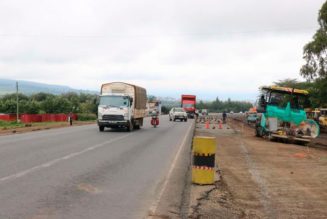
Counties may be forced to drop loss-making revenue streams and duplicated charges, as a new model obligates them to do a cost-benefit analysis before imposing fees on businesses.
The Tariffs and Pricing Policy model wants the devolved units to base trade fees on firms on a pricing model that compares spending on collecting a charge and the amount to be netted to avoid current cases where some counties are “spending a shilling to collect a shilling”.
The Commission on Revenue Allocation (CRA), which has developed the model for counties to implement and localise as legal bases for taxing their residents, says most regions have been riding blind in their own source revenue generation, leaving many barely scratching their potential.
“This model has a step-to-step guide to enable the counties to develop and be able to justify why they charge fees for the services that they provide; mwananchi will be able to associate with the fees because every fee that is going to be charged will be commensurate to the service that will be provided,” says CRA Chairperson Mary Chebukati.
The CRA notes that most counties continue to use finance bills as a basis for the collection of their revenues, in contravention of the law that requires them to have legal policies guiding the same.
As a result, traders continue suffering as different countries impose cess and other fees on them in cross-border businesses.
“There have been a lot of complaints from traders in terms of fees and charges that are being collected arbitrarily and duplicity,” said Hadija Juma, a CRA commissioner.
The commission’s model addresses five key revenue streams that most counties rely on trade licensing fees, building plan approval fees, parking fees, market access fees, and house rent.
It notes that, for instance, to arrive at the tariff a county should charge businesses under the trading license framework, counties must first consider the type of business, its size, and the cost of providing the service, which addresses the cost of services such as “firefighting, street lighting, road access, stormwater management, and waste collection.”
“The model policy once domesticated by counties will promote business in Kenya by eliminating the multiplicity of tariffs across the counties. We believe that tariffs can be a significant revenue source for county governments in order to address revenue constraints in service delivery,” Ms Chebukati said.
Council of Governors (CoG) chairperson Ann Waiguru noted that the adoption of the new model as a basis for primary laws to guide counties’ OSR collection has the potential to raise their collections and supplement the equitable share from the national government.
A study by the CRA in 2022 noted that while counties had the potential to collect up to Sh216 billion in OSR yearly, they are yet to exhaust their potential.
In the first nine months of the current financial year, counties collected Sh41.4 billion in OSR, up from Sh28 billion in a similar period last year.
CoG’s Finance Committee chairperson Fernandes Barasa said counties were ready to implement the new model, having been relying on by-laws used since the defunct local authorities.
“This launch marks the onset of counties realising their revenue potential of Sh216 billion in OSR. We will work very closely with CRA to roll out this tariff and pricing policy so that all the 47 counties can now enact specific revenue stream laws,” said Mr Barasa also Kakamega governor.









